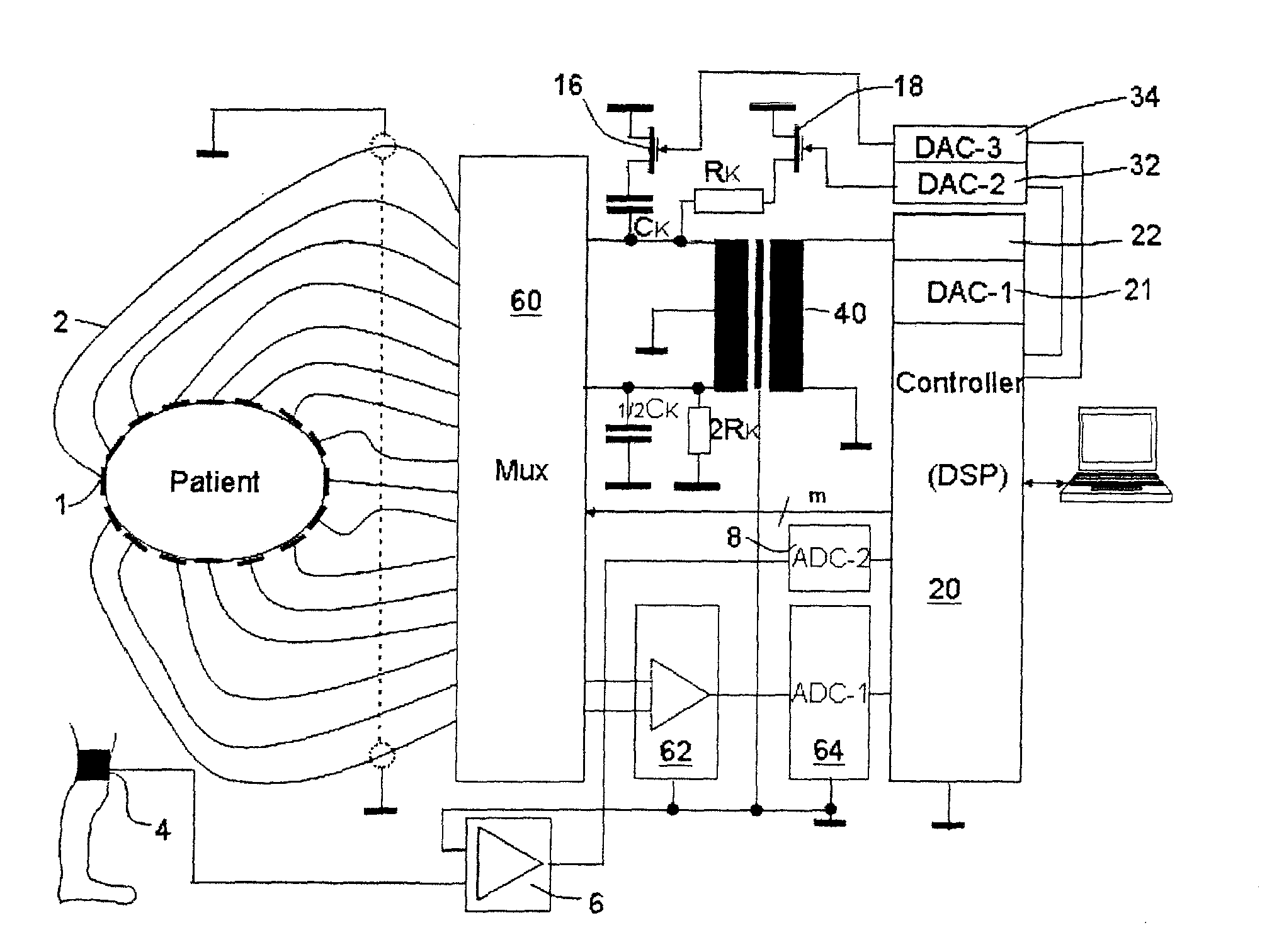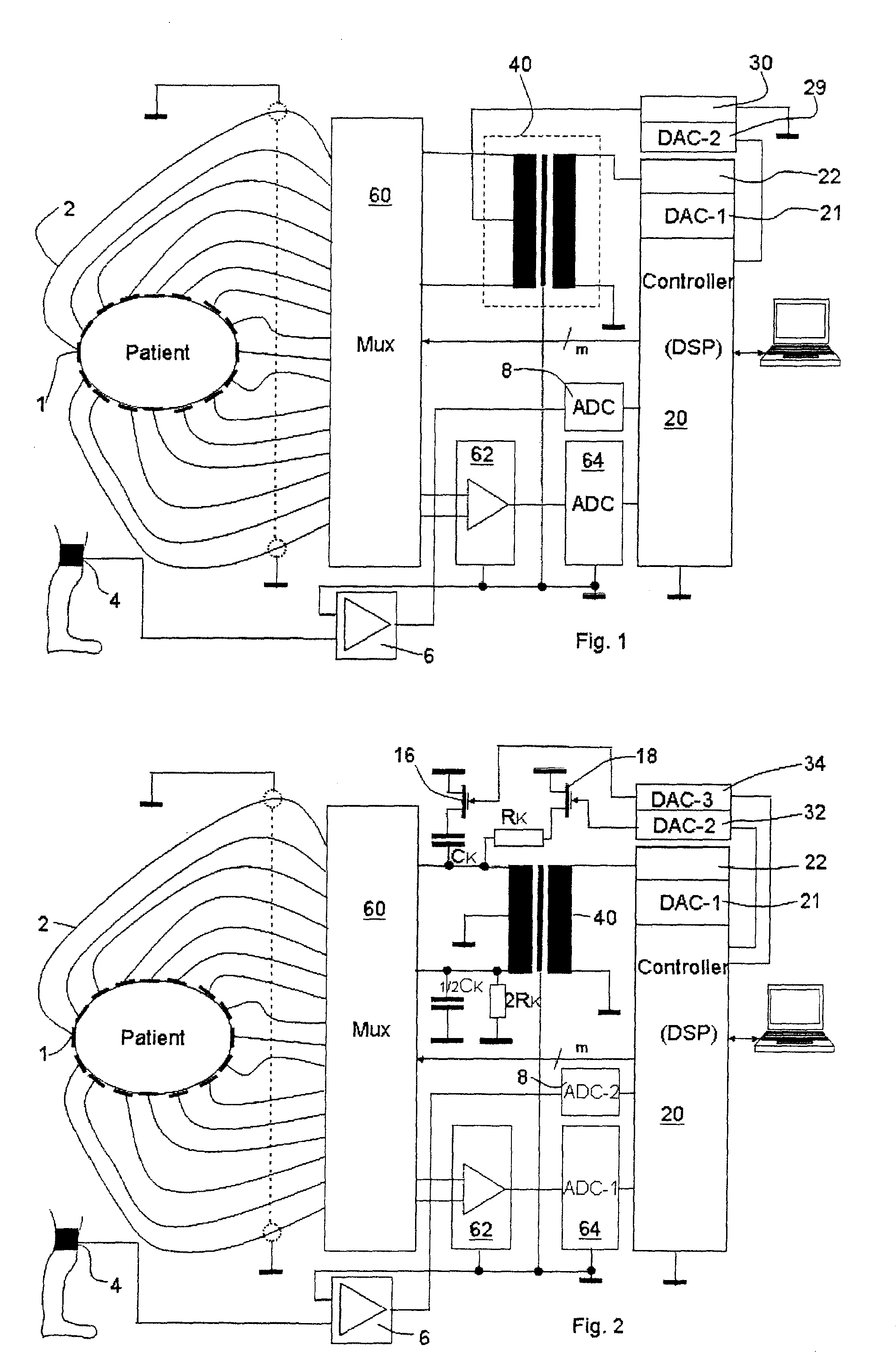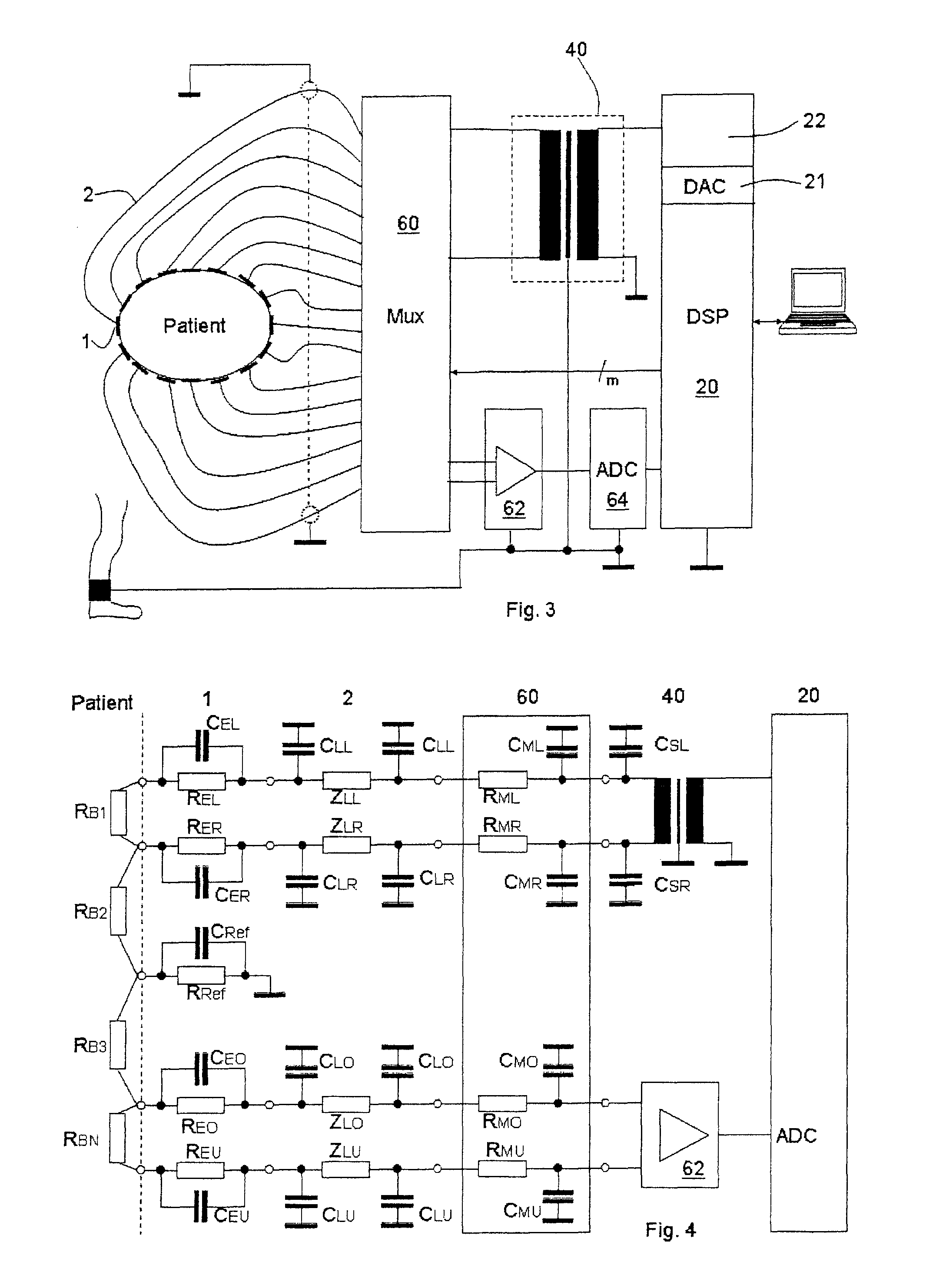Electroimpedance tomograph with common-mode signal suppression
a tomograph and common-mode technology, applied in the field of tomographs with a plurality of electrodes, can solve the problems of limiting the measurement technique, requiring sufficient representation, and requiring simple increase in measuring current,
- Summary
- Abstract
- Description
- Claims
- Application Information
AI Technical Summary
Benefits of technology
Problems solved by technology
Method used
Image
Examples
Embodiment Construction
[0029]Referring to the drawings in particular, the electroimpedance tomograph shown in FIG. 1 has a control and evaluating unit 20, which is connected via a digital-analog converter 21 to an AC power source 22 for controlling same. The AC power source 22 with portions of the control and evaluating unit 20 form an overall AC power unit generating the applied alternating current which is actually applied to the patient. The alternating current of the power source 22 is galvanically separated from the selector switch 60 via an isolation transformer or transformer 40. The selector switch or multiplexer 60 applies the AC applied current signal with the cable 2 to two electrodes 1 each (only one of a total of 16 electrodes is provided with a reference number). The other electrodes are then used consecutively as measuring electrodes in pairs. The voltage signals of the measuring electrodes are sent to the control and evaluating unit 20 via the multiplexer 60 and a differential amplifier 62...
PUM
 Login to View More
Login to View More Abstract
Description
Claims
Application Information
 Login to View More
Login to View More - R&D
- Intellectual Property
- Life Sciences
- Materials
- Tech Scout
- Unparalleled Data Quality
- Higher Quality Content
- 60% Fewer Hallucinations
Browse by: Latest US Patents, China's latest patents, Technical Efficacy Thesaurus, Application Domain, Technology Topic, Popular Technical Reports.
© 2025 PatSnap. All rights reserved.Legal|Privacy policy|Modern Slavery Act Transparency Statement|Sitemap|About US| Contact US: help@patsnap.com



